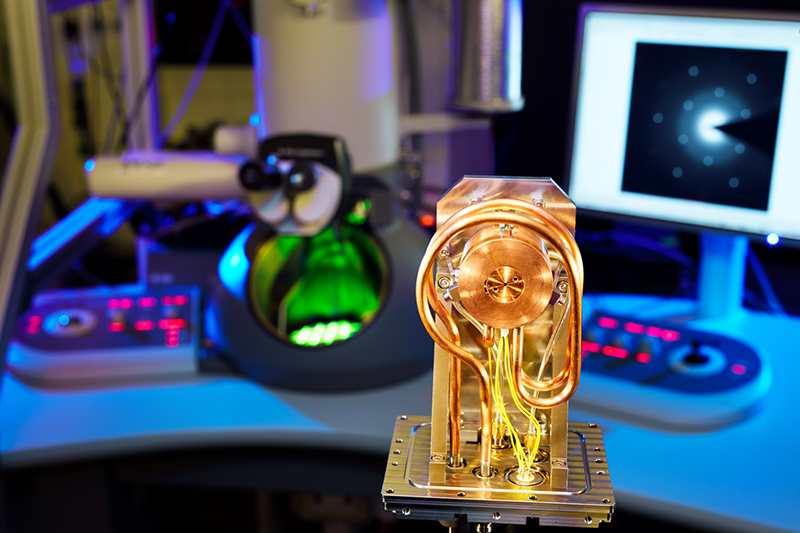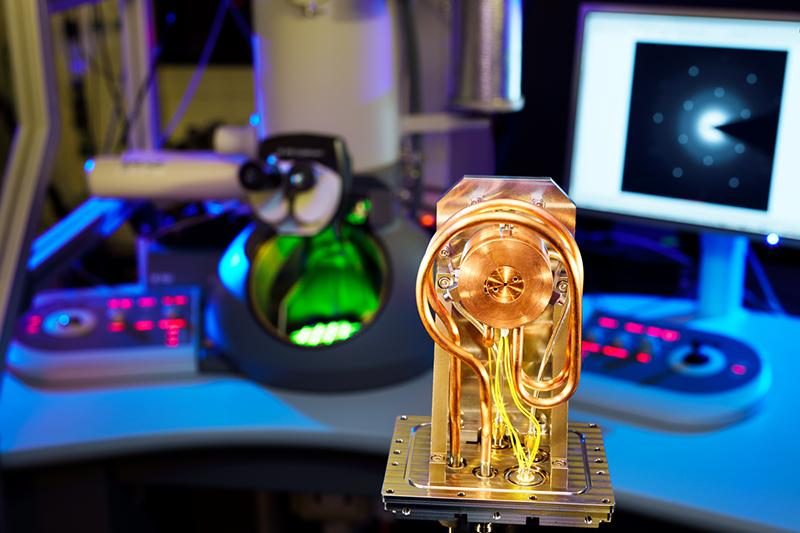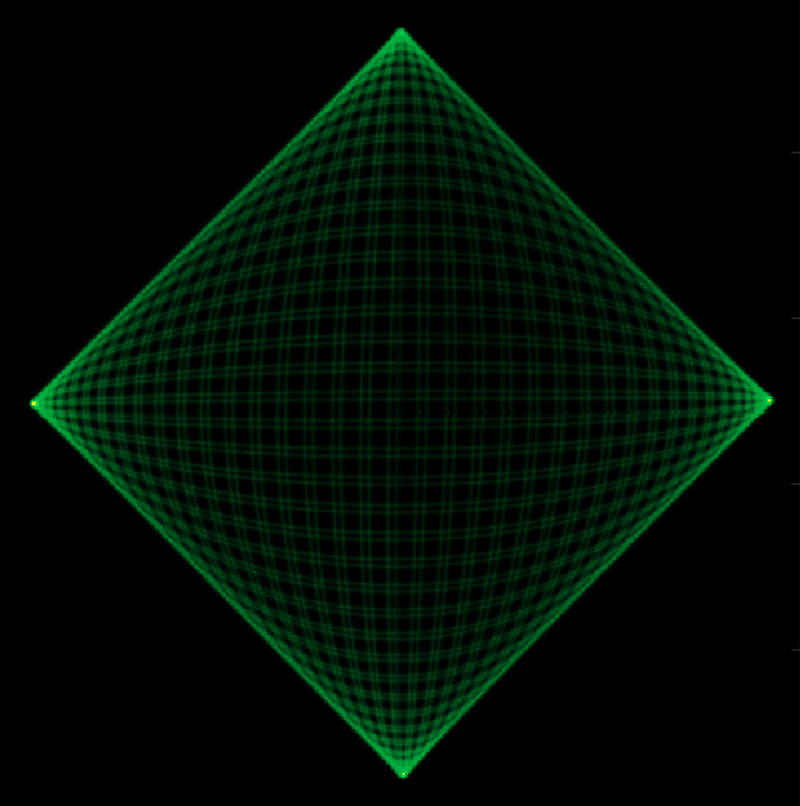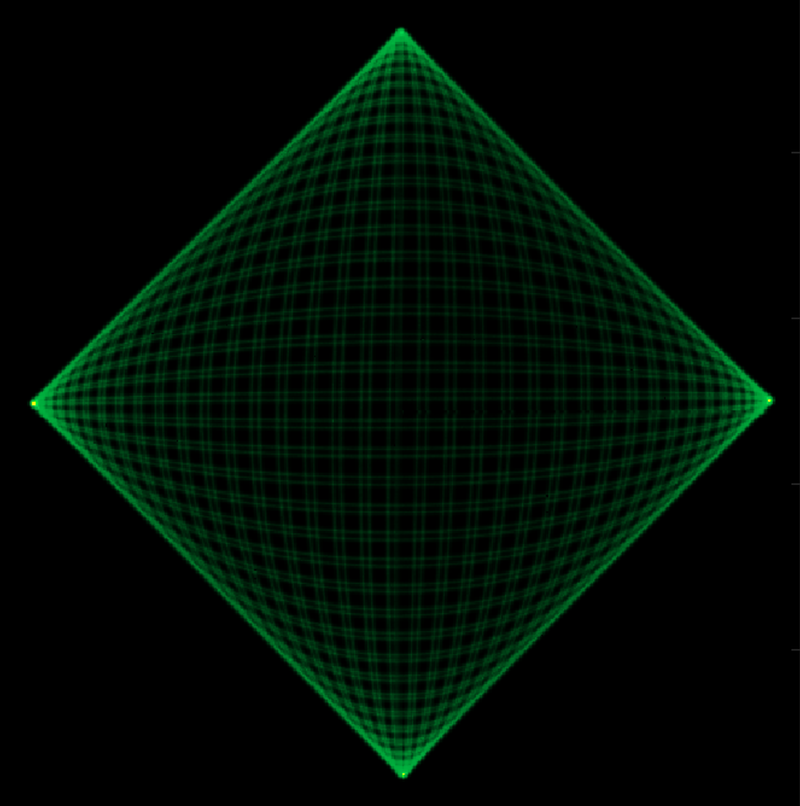Measuring the Timing of Electrons in a Beam
For researchers working to develop the next generation of electron microscopes, understanding the details of electron beams is essential. Now a research team has observed the weak repulsion of electrons in a continuous beam with the highest precision to date by measuring the number of electrons arriving at a detector within a timeframe of less than 1 picosecond (ps) [1]. With improvements, the new technique may be able to pick up the repulsion attributable to the Pauli exclusion principle. The researchers think the work may eventually help engineers design more sensitive electron microscopes based on quantum principles.
Many natural events such as rain falling are uncorrelated: the fall of each raindrop is independent of every other raindrop. Given a certain time window, say 1 second, the likelihood that zero, one, two, or more raindrops will fall within a certain area is predicted by a statistical distribution called a Poissonian. If, however, the raindrops could interact, then their arrivals might be correlated or anticorrelated—the drops could fall together more often or less often, depending on whether the interaction is attractive or repulsive. Then the probability of similarly timed raindrops would be either super-Poissonian (occurring more often) or sub-Poissonian (occurring less often).
In a beam, electrons interact with each other in two ways. First, they are all negatively charged, so they exhibit so-called Coulomb repulsion. Second, they obey the Pauli exclusion principle, which prevents multiple electrons from occupying the same quantum state and also leads to repulsion. Either of these effects could produce sub-Poissonian statistics in the electron arrival times, assuming the measurement time window is short enough. Using pulsed beams and time windows less than a picosecond, researchers have seen the Coulomb effect, but the timescale at which the Pauli effect begins to have an effect is not known. “The theory is not completely developed,” says PhD student Simona Borrelli of Eindhoven University of Technology in the Netherlands, although it should certainly be strong for time windows of 1 femtosecond (fs) or less.
Electron microscopy researchers hope to exploit a deeper knowledge of the quantum properties of electron beams—such as the timescale for the Pauli effect’s appearance—to make a quantum electron microscope. Electrons in a known quantum state could be extremely sensitive to interactions with a sample, allowing imaging with low-intensity beams. Such beams are potentially suitable for biological samples that can’t survive in today’s electron microscopes.
Borrelli and her Eindhoven colleagues, led by Jom Luiten, wanted to improve electron correlation measurements with continuous rather than pulsed beams. Ultrashort pulses contain too few electrons and have a wider range of energies, which is not conducive to Pauli exclusion effects. The researchers devised a way to beat the current time resolution record for continuous beams (about 10 ps). They sent their electron beam through a cavity that hosted oscillating magnetic fields that deflected electrons in both x and y directions, perpendicular to the beam direction. The x and y oscillation frequencies didn’t match, which led to complex “Lissajous” patterns in the final landing points of electrons on the detector. Given the known frequencies of the fields (in the gigahertz range), the team could translate the location of each electron detection into a time.
The researchers obtained the statistics for time windows as short as 340 fs. They found that for time windows between 2 ps and 340 fs, the sub-Poissonian statistics were clear—and more obvious than for previous continuous-beam experiments—whereas longer time windows led to Poissonian statistics, as expected. Borrelli says that the observed anticorrelations “can probably be largely explained by Coulomb repulsion.” But without a proper theory, the team cannot say with certainty at what timescale the Pauli effect should be noticeable.
“It’s an ingenious experiment and beautifully executed,” says Claus Ropers, who works on ultrafast electron microscopy at the Max Planck Institute for Multidisciplinary Sciences in Germany. Ropers agrees that the team has probably not yet detected the quantum effect. He and his colleagues recently measured femtosecond-scale electron pulses [2], and the Coulomb-dominated correlations they measured are quantitatively consistent with Coulomb repulsion in the new continuous-beam experiments, he says.
The team plans to reduce the time window even further by making some technical improvements. If a future version of the experiment can detect the quantum effect, then—in addition to benefiting electron microscopy—it could provide a new avenue to explore so-called quantum exchange statistics of electrons, Borrelli says. This fundamental aspect of quantum particles is responsible for the pressure that prevents neutron stars and white dwarfs from collapsing.
–Katie McCormick
Katie McCormick is a freelance science writer based in Sacramento, California.
References
- S. Borrelli et al., “Direct observation of sub-Poissonian temporal statistics in a continuous free-electron beam with subpicosecond resolution,” Phys. Rev. Lett. 132, 115001 (2024).
- R. Haindl et al., “Coulomb-correlated electron number states in a transmission electron microscope beam,” Nat. Phys. 19, 1410 (2023).







